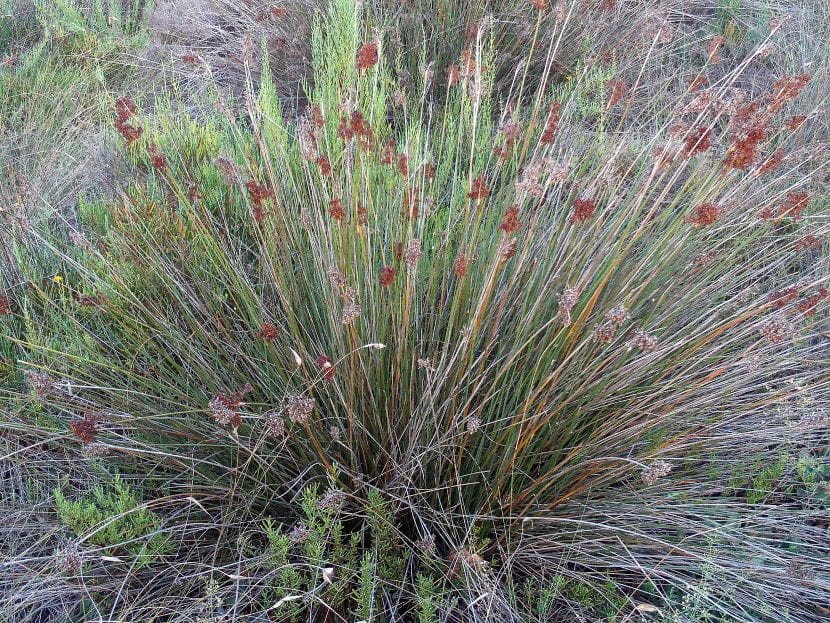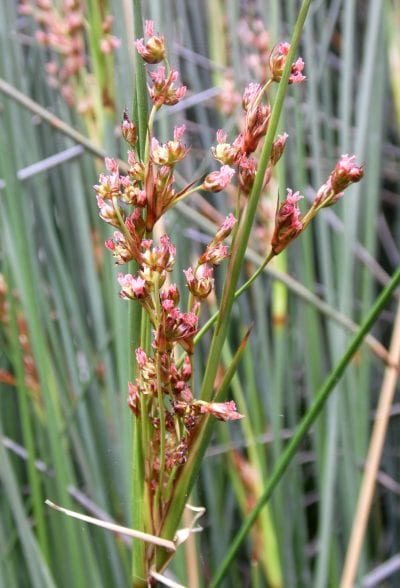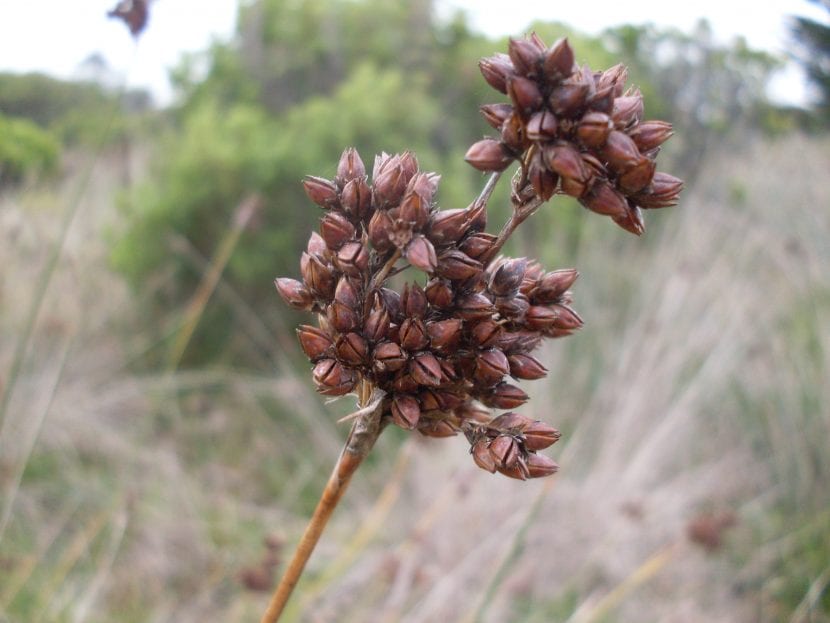
You live near the sea? Is your soil very saline? If this is the case, and you are also looking for a plant that can really survive in these conditions, then it may be difficult for you to find another that is as difficult as the prickly reed, whose scientific name is juncus acutus.
This perennial tussock plant can be found growing on the beach. With this I tell you everything. Well, everything ... everything ... rather not, but surely after reading that you are interested in knowing more about her, right? Well let's go there 🙂.
Origin and characteristics of juncus acutus

Our protagonist is a slow-growing perennial cespitose plant that is widespread in the Mediterranean region, the Canary Islands, South Africa, California and South America. It grows in humid areas with a high rate of salinity, coastal sand, lagoon edges, streams, flooded lands and wetlands. It is characterized by being formed by cylindrical and pungent sheets (leaves), green in color that reach a height of between 1,5 and 2m and a width of up to 1m..
It blooms from mid spring to early summer. Its tiny flowers are grouped in compound inflorescences of brown or pinkish color. Once they are pollinated, the fruit begins to ripen, which is a trigonal to oval pink capsule that turns dark brown when it finishes ripening.
How do you take care of yourself?

Would you like to get a copy? If so, we recommend that you provide the following care so that you can enjoy it for many years:
Location
It is important that it is placed or planted in a sunny exposure. It does not have invasive roots, but you do have to be careful with its leaves as they prick. For this reason, it is not advisable to put it near passageways; although on the contrary it could look good on the lawn for example.
Soil or substrate
It is not demanding, but needs to be kept moist. Remember that you live in areas where your root system does not find it difficult to find water.
Irrigation
Frequent. You have to prevent the earth from drying out.
Subscriber
From spring to late summer it can be paid with organic fertilizersand manure or guano. You can also add banana and / or egg peels, tea bags, among others that you can see here. If you live in an area with a mild climate, you can pay until autumn.
Planting or transplanting time
During spring It will be a good time to plant it in the garden or to change it pot, something that by the way should be done every two years.
Multiplication
It multiplies by seeds in spring or summer. The sowing method is simple: you simply have to fill a pot with substrate, spread the seeds, cover them with a little soil and water. To make it easier for you to separate them later, it is convenient that you put no more than 3 seeds in a 10,5cm diameter pot.
Plagues and diseases
It's very tough.
Rusticity
The thorny reed resists cold and frost down to -4ºC. In the event that winter is cooler in your area, you can keep it indoors in a very bright room during those months until spring time returns.
What is the juncus acutus?

Ornamental
The truth is that this plant is not easily found in nurseries, which has an explanation: it is very common on beaches. Normally, humans who see the same type of plant beings every day, if we find them later for sale, we do not usually buy them. But the reality is that prickly reed is one of those common plants that can give us a lot of satisfaction.
Its care and maintenance is very simple, as we have commented, so from here I encourage you to get a copy.
Baskets
Undoubtedly, the most widespread use is that of to weave baskets with straw. It also serves as a vegetable fiber for tying. Its dried leaves are very strong, so it may come in handy at some point.
Where to buy prickly reed?
As is often the case with all too common plants, it is not easy to find it for sale, and when you finally do get it, the price may surprise you a bit. Because, I recommend that you look in online stores, since it is likely that those in your area do not have it and / or cannot get it.
A young specimen is around 14 euros, plus clear shipping. Once it arrives, you can move it to a larger pot or the garden - only if it is spring or summer.

Have you heard of the Juncus acutus? This beautiful plant can make any corner of our garden or patio look very different, much more beautiful. Surely, if you finally acquire a copy, you will not regret it 😉.